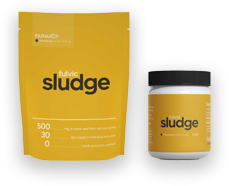
Tell me about the mycotoxin Zearalenone
Zearalenone is a mycotoxin produced by several species of fungi, including Fusarium graminearum, Fusarium culmorum, and Fusarium crookwellense. It can contaminate crops such as maize, barley, wheat, and rice, and is commonly found in animal feed.
Ingestion of Zearalenone can have harmful effects on both humans and animals. In humans, it has been linked to hormonal imbalances and symptoms such as abdominal pain, diarrhea, and headaches. In animals, it can cause infertility and reproductive problems, as well as liver and kidney damage.
It is also a mold found in water damaged buildings and can contribute to serious health issues to those in the home.
How does Zearalenone affect the body?
Zearalenone is a mycotoxin that can affect the body in several ways. Some of the ways Zearalenone can affect the body include:
- Hormonal imbalances: Zearalenone can mimic the effects of estrogen in the body, leading to hormonal imbalances and disrupting normal reproductive function.
- Reproductive problems: In animals, Zearalenone can cause infertility, decreased fertility, and reproductive problems, such as reduced sperm count and motility.
- Liver and kidney damage: Zearalenone can cause liver and kidney damage in both humans and animals. This can lead to long-term health problems, such as chronic liver disease and kidney disease.
- Gastrointestinal symptoms: In humans, Zearalenone can cause abdominal pain, diarrhea, and headaches, as well as other gastrointestinal symptoms.
The severity of the effects of Zearalenone on the body depends on several factors, including the dose, the duration of exposure, and the age and health of the individual. It is important to minimize exposure to Zearalenone by storing crops and animal feed in a dry and well-ventilated place, and by implementing effective crop management practices to reduce the risk of fungal contamination.
Can Zearalenone come from water damaged buildings?
Yes, Zearalenone can come from water-damaged buildings. Zearalenone is produced by fungi, including certain species of Fusarium, that thrive in moist environments. Water damage in buildings can create the ideal conditions for these fungi to grow and produce mycotoxins, including Zearalenone.
Inhaling contaminated dust or fragments of building materials can lead to exposure to Zearalenone. In addition, exposure can occur through skin contact or ingestion of contaminated food that was stored in the affected area.
It is important to properly address water damage in buildings to prevent the growth of fungi and reduce the risk of exposure to mycotoxins, including Zearalenone. This may involve removing affected materials, cleaning and disinfecting the affected area, and improving ventilation to reduce moisture levels.
How do I detox Zearalenone from my body?
Detoxing mycotoxins (and accompanying mold colonization) is a multi-layered process. If you need guidance, contact Matt about a consultation.
Some steps are:
- Avoid mold and mycotoxins in your food
- Address and prevent mold in your home
- Bind mycotoxins within your body
- Support your liver and kidneys
- Poop at least two times per day
- Use the sauna to mobilize toxins (bind before/during/after)
- Work on your gut health
Want to see if mycotoxins are affecting your body?
Order a Mycotoxins lab (urine test) to see if you have been affected by mold toxicity.
* AI generated research included
